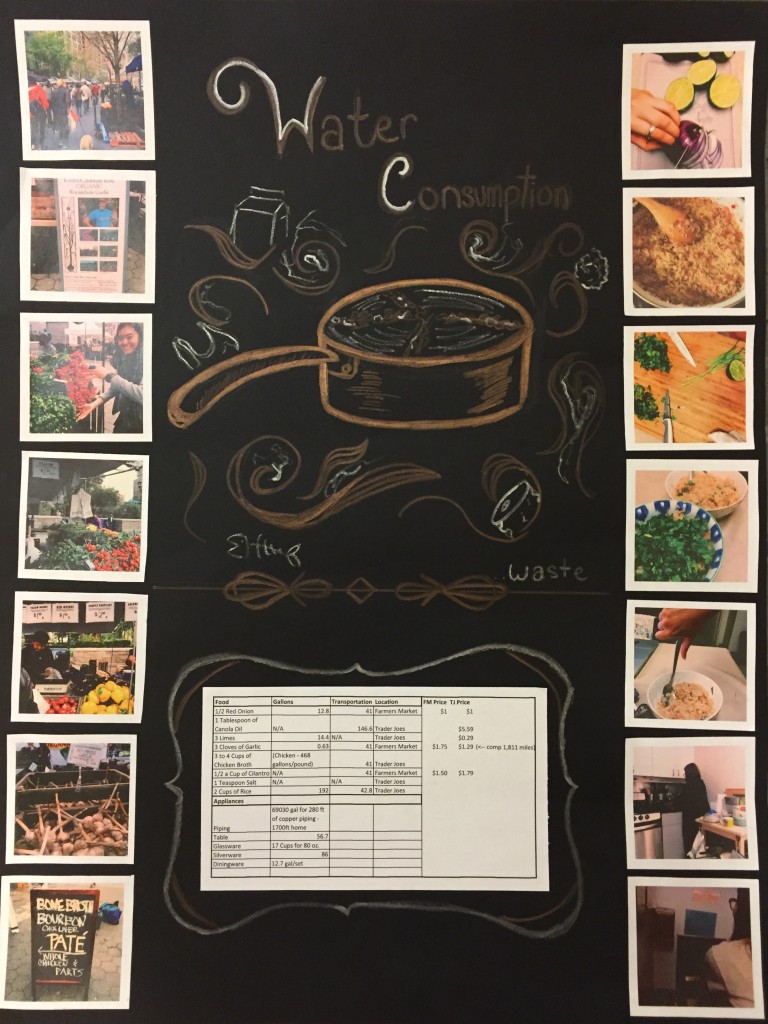For this project, one of our biggest challenges (aside from actually cooking) was converting our food’s virtual water. We went through many resources online, but only found pdfs on the view of virtual water. However, flipping through “The Green Blue Book” we were able to gather some facts. We did miss a few items on the list though.
Another issue this project faced was calculating the water consumption during transportation. It was hard to find items such as limes and salt because they can no longer be made at all in the US. Limes are no longer made in the US and prices have increased a lot because they are grown in Mexico. It is becoming difficult to grow limes in Mexico though due to weather, disease, and crime.
Here are all the data collected:
A majority of the items was purchased from the Farmer’s Market and a few other’s from Trader Joe’s. A lot of the prices fluctuated between which market priced their goods higher. Although, we chose the Farmer’s Market as a healthier and greener solution for buying produce than Trader Joe’s. At the Farmer’s Market, many of the foods look as if they were just pulled straight from the ground and delivered. Other grocery stores have some of the fruits cut already and baggage. Because of this, we were left to assume that the food tended to be put through a bigger production system than the food that goes into the farmer’s market.
“Ratio of water to rice. This is the area where most people have trouble cooking rice. Most rice is perfectly cooked when the final moisture content is between 58% and 64% moisture. At lower moisture contents, the rice is firmer. The final moisture content is a matter of preference and preference can differ with the type of rice and final cooked application. The math is very simple; 100 grams of rice with a starting moisture content of 12% needs 110 grams of water to be fully cooked at 58% moisture. 100 grams of rice with a starting moisture of 12% needs 145 grams of water to be fully cooked at 64% moisture. One cup of rice weighs about 205 grams. The same cup of water weights about 240 grams. If no water is lost in the cooking process, one cup of water is enough to cook one cup of rice, and yet most recipes call for two cups of water to one cup of rice.
It all comes down to how much water is lost in the cooking process.
http://www.sagevfoods.com/MainPages/Rice101/Cooking.htm
http://www.finecooking.com/item/18330/the-science-of-cooking-rice
The reason for rice being chosen for this project was that the water consumption and ratio differs for every person’s preference on how they want to cool the rice.
Here is a last look of our project

